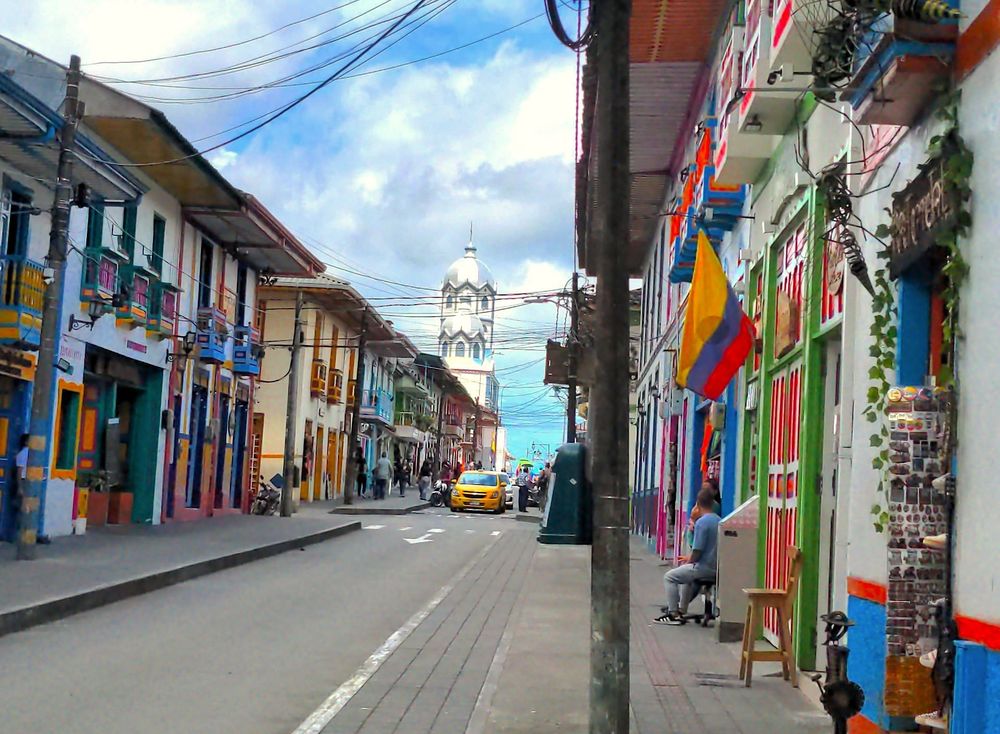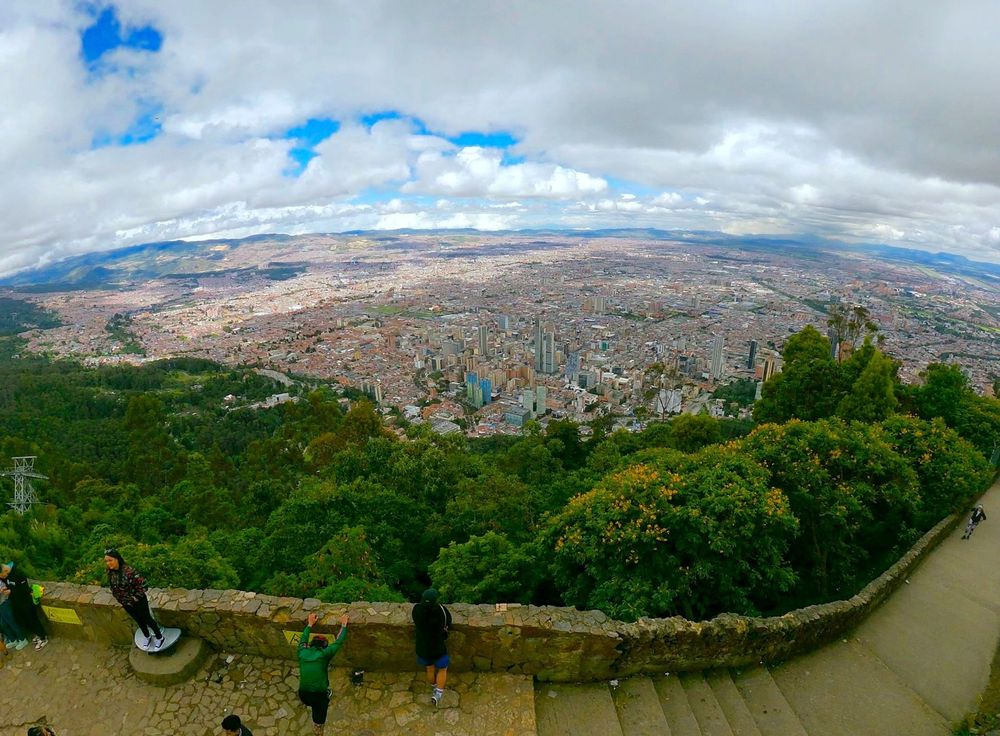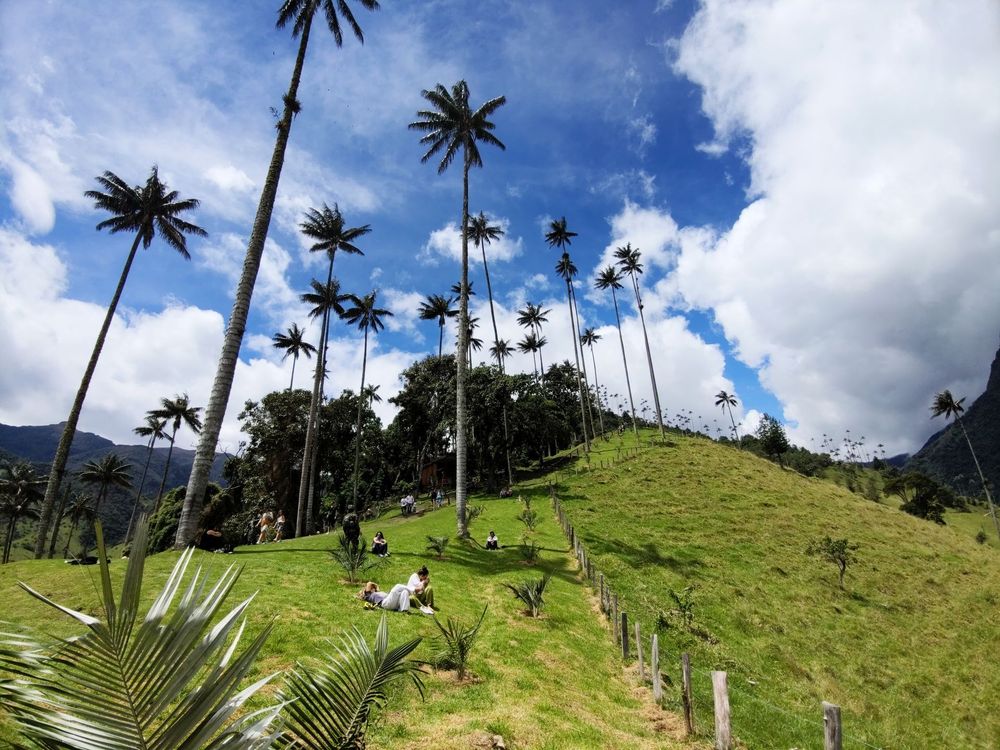Filandia: Beautiful town in the coffee region
Aug 19, 2025

One of the towns we had the opportunity to visit last month was the colorful town of Filandia, located in the hills of Colombia’s Coffee Triangle. It was my first time visiting this place, which truly captures the essence of the region’s cultural and natural heritage.
This town is as beautiful as Salento, but it felt more authentic and less touristy, with its cobblestone streets, brightly painted balconies, and sweeping views of rolling coffee plantations.
Just before arriving in town, we stopped at the Mirador Colina Iluminada, a tall wooden lookout that offers 360-degree views across the Andes and stunning perspectives of the surrounding regions of the famous Colombian Eje Cafetero. And of course, we couldn’t miss stopping by one of the Café Quindío stores to enjoy a delicious Colombian coffee and take a break before continuing our walk around the town.
Above you can see a representative picture of the beautiful town of Filandia.
Muisca Raft at the gold museum
Aug 15, 2025

In the city center of Bogotá, the Museo del Oro (Gold Museum) is one of Colombia’s most fascinating cultural treasures. Home to over 55,000 pieces of gold and other materials from pre-Hispanic cultures, it offers visitors a comprehensive journey through the artistry, beliefs, and traditions of the ancient peoples who once called this land home. Among its star attractions is the iconic Muisca Raft — a masterpiece of pre-Columbian goldwork that embodies one of the country’s most enduring legends: El Dorado.
The Muisca Raft is more than just an extraordinary work of art; it is a window into the ceremonial life of the Muisca people. Created between 600 and 1600 CE using the lost-wax casting technique, this intricate gold sculpture depicts a ritual at Lake Guatavita, where a new chief — his body covered in gold dust — offered gold and emeralds to the gods. Measuring just under 20 cm in length, the raft features the central figure of the chief surrounded by attendants, banners in hand, sailing into legend. Today, it remains one of the museum’s most celebrated pieces — a vivid reminder of the myth that defines Colombia’s pre-Columbian heritage.
Bogota from Monserrate
Aug 13, 2025

At the end of our Colombian trip, we were lucky with a really pleasant, sunny day, so we made our way up to one of Bogotá’s most iconic landmarks: Monserrate. Located over 3,150 meters above sea level, this mountain has been watching over the city for centuries, and today it’s not just a religious site but also one of the best vantage points you can find in the Capital District. You can get there by taking the cable car (which we did), riding the funicular train, or climbing up the steep walking trail. The reward is always the same — a sweeping view of the capital that seems to go on forever and allows you to grasp the magnitude of the city.
It's hard to capture the full scale of Bogotá even from this height, but I tried my best with my GoPro camera to get a fisheye view of the city. The picture shows the sprawling urban landscape, with its mix of colonial architecture, modern skyscrapers, and vast neighborhoods, particularly in the southern part of Bogotá.
Now, being at more than 3,100 meters above sea level is no joke, and the air is definitely thinner than what we’re used to in Europe, so it was a good idea to take it easy and enjoy the view rather than rush around. The altitude was a bit challenging for two of our family members, but the experience was well worth it. Here you can visit the official site and get additional information
Aerial view of San Andres Island
Aug 10, 2025

Last month, I had the chance to explore a place that many people don’t even realize belongs to Colombia: The islands of San Andrés and Providencia, located in the Caribbean Sea. Even though they are closer to Nicaragua than to mainland Colombia, they’ve been part of the country since colonial times, when they were administered from the Viceroyalty of New Granada (today’s Colombia) rather than from Central America.
We spent a few days on San Andrés, the largest island, and it was a wonderful experience. The water has more shades of blue than you could ever imagine, and the Raizal culture gives the island its own unique rhythm. This is definitely Colombia, but a very different part from the mainland. When I was flying out of the island, I managed to take the snapshot you see above, showing the downtown and northern part of San Andrés — and, of course, the incredible sea that makes this place so special.
Amazing Valle del Cocora
Aug 6, 2025

Last month, I had the privilege of returning to one of my home countries with my family, and we used this trip to visit some of the most beautiful places Colombia has to offer. I always tell my friends and acquaintances that if they visit the country, one of the most memorable spots is the coffee-growing region — in particular, the "Valle del Cocora" (Cocora Valley) with its unique wax palm trees.
I've had the chance to visit several countries around the world, and this spot is still one of my favorites. During that trip, we visited Salento and took a Willys jeep to the Valle del Cocora. Once I was there, hiking uphill through the wax palm tree forest, I remembered why this place is truly special. I would definitely recommend it to anyone visiting Colombia.
If you want to check out the exact place where that picture was taken, this is the point on the map. Next page